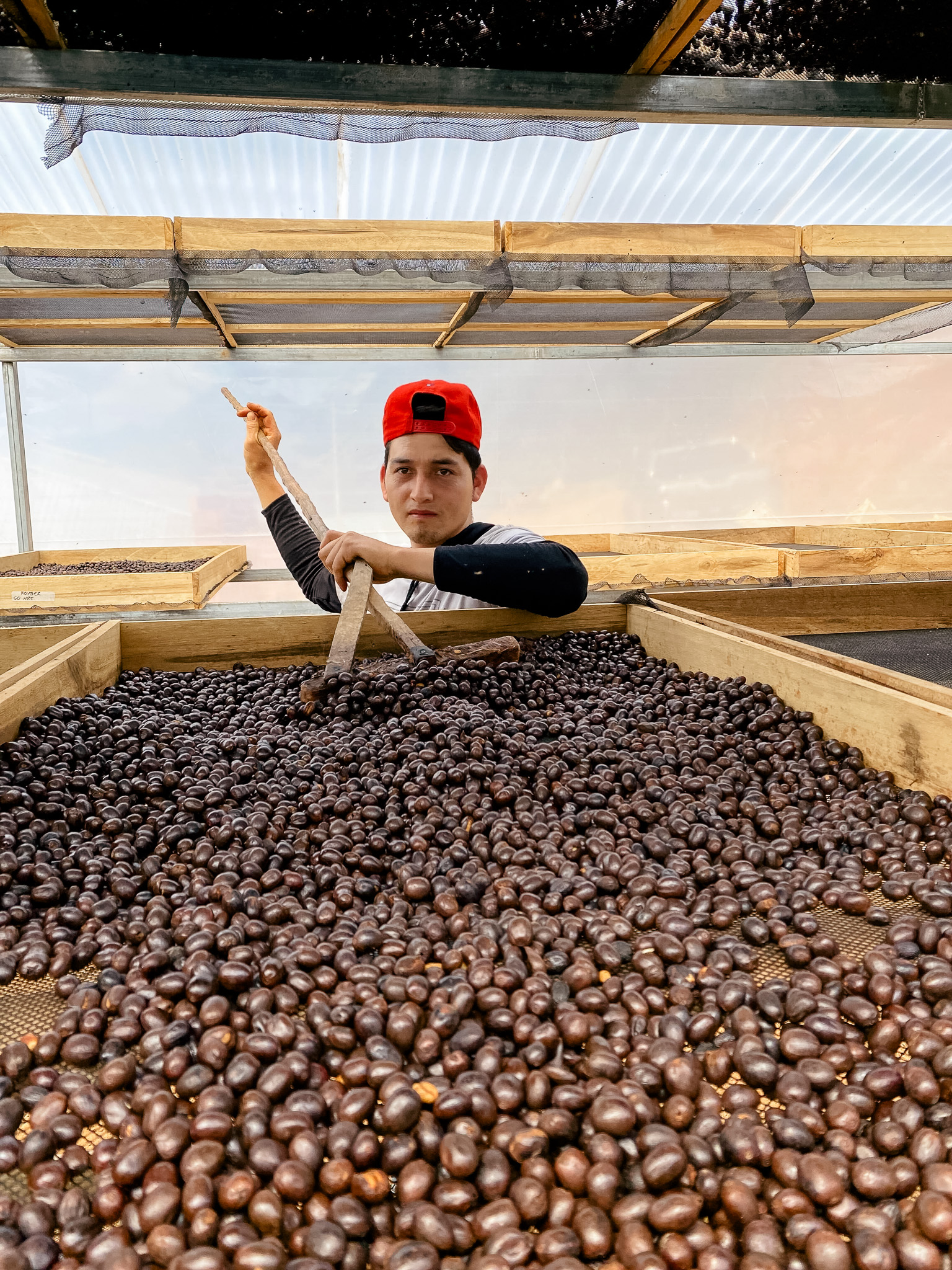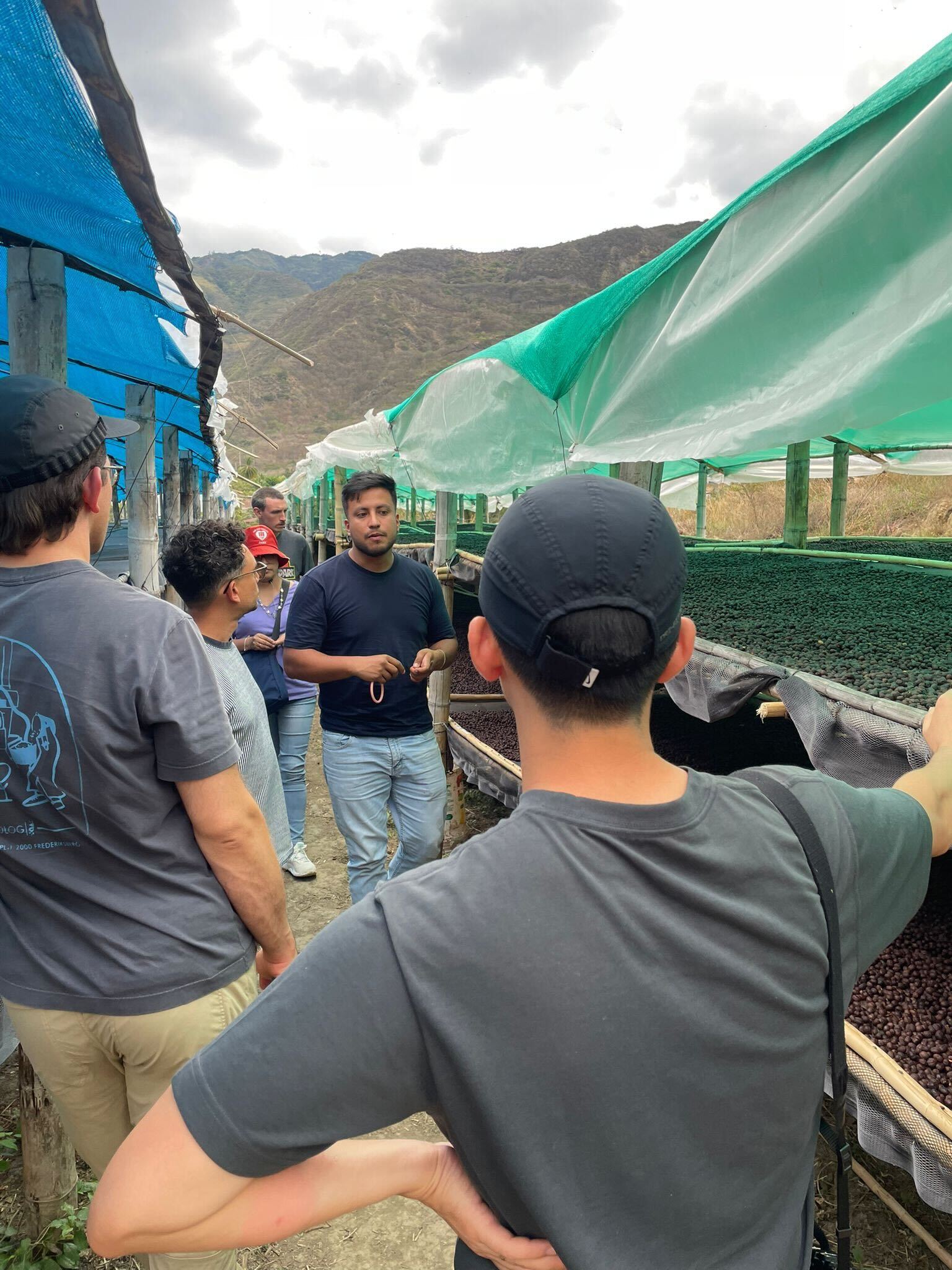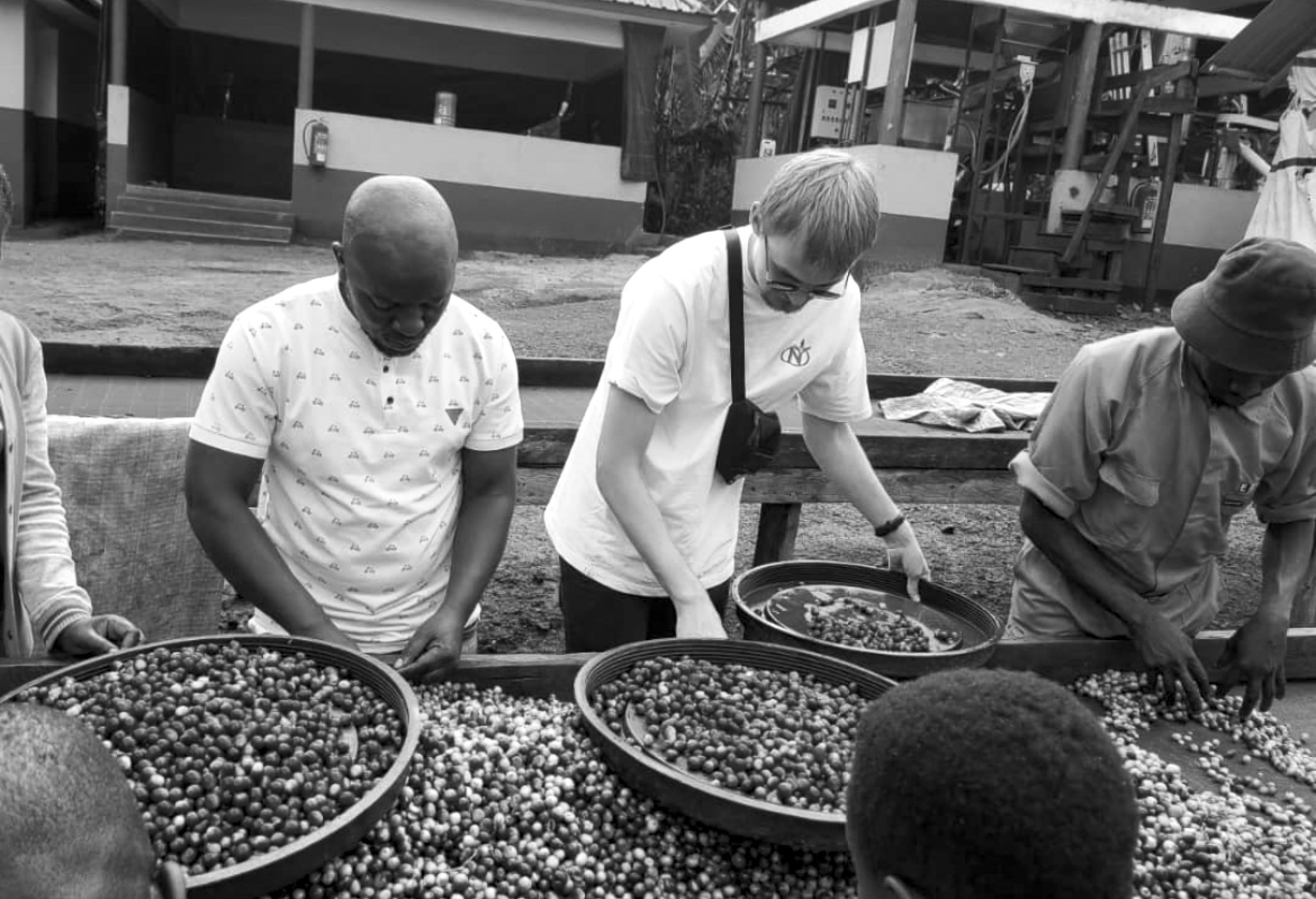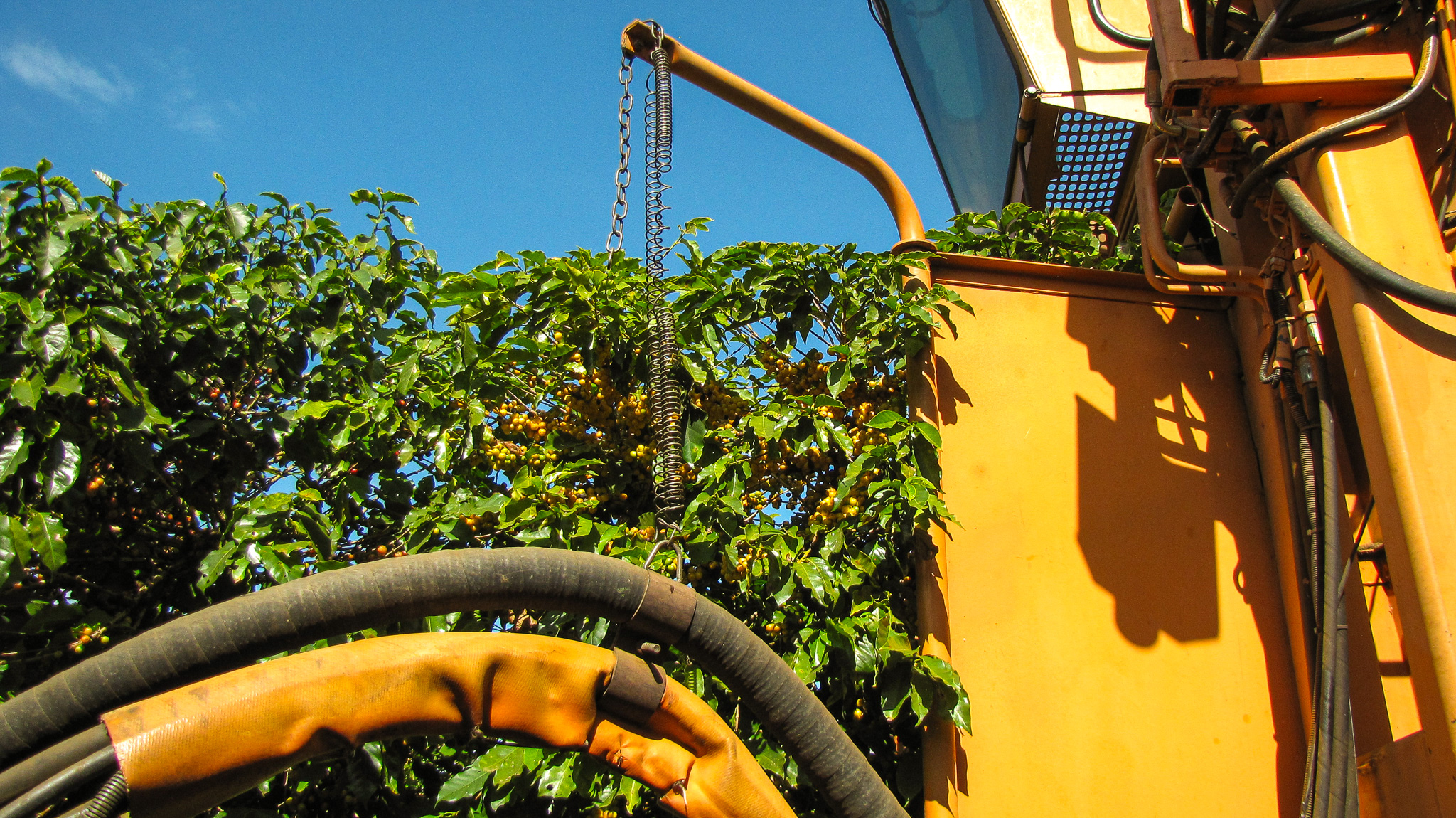Peru’s natural coffees have made a name for themselves, with high-altitude farms and innovative fermentation techniques creating vibrant, fruity, and complex flavors. Behind every cup is a story of collaboration and a growing community of producers shaping our Peruvian specialty coffee.
How Naturals Are Produced in Peru: From Seed to Cup
Natural processing in Peru requires controlled fermentation and drying, with adequate infrastructure even during rain periods. Partners like JJ Marck use warehouses to manage fermentation at higher, cooler altitudes, with drying done two hours away at lower, hotter, drier sites. In the south, Cooperative Incahuasi uses communal processing stations to compensate for limited individual farm resources. These practices ensure consistent cup quality while maintaining traceability. Each stage, from cherry selection to final drying, requires meticulous oversight. With unpredictable weather and limited resources, consistent quality is challenging but achievable with structured protocols and targeted training.

Why is it challenging to produce naturals in Peru?
Natural coffees in Peru are still in a relatively experimental phase compared to other origins like Colombia or Honduras. Early efforts have focused on improving variety selection, removing lower-quality coffee cherries, and refining separation processes at both farm and supplier levels.
Good Peruvian naturals are rare, as many producers lack infrastructure, such as adequate drying facilities, to process them in a controlled way. Producers also face the dilemma of whether to take the financial and time risk to produce natural coffees without an internal market to absorb lower-quality lots. Weather inconsistencies, such as moderate rain during normally dry months, often lead producers to process more washed coffees than naturals.
Naturals from Peru are aimed purely at the specialty coffee market, whereas the internal market is generally more focused on commercial organic and Fairtrade-certified washed coffees in larger volumes. There is no strong culture of developing naturally produced coffees, and shifting producer mindsets is key to sustaining natural production. NA and its partners are continuously working on this. This year, we sourced naturals from Lonya Grande and Huabal in the north and established a new relationship with Cooperative Incahuasi in the south.
Peru’s high altitudes (up to 2,400 meters) and diverse climates contribute to unique flavor profiles, giving natural coffees fruity, floral, and complex acidity characteristics. These naturals are processed as ‘normal’ naturals, as extended fermentations and anaerobic processing are still being explored. Continued support and feedback from importers and partners help maintain quality during experimental processing stages.

Partnership with JJ Marck
NA has worked closely with JJ Marck this year to raise quality levels. JJ Marck focuses solely on natural coffees, allowing our feedback and guidelines to be implemented quickly and accurately. This year, we emphasized variety separation at the farm level, more control at fermentation, and smaller lot sizes.
JJ Marck purchases coffee cherries directly from farmers, controlling fermentation and drying to optimize flavor profiles and cup consistency. The drying stations and lab facilities are located at roughly 750 meters altitude for optimal conditions. Nordic Approach and JJ Marck share a commitment to quality, traceability, and farmer support. Both aim to experiment with processing methods while creating sustainable, profitable coffee practices. Projects include improving drying protocols and providing farmer training on natural processing techniques, with special attention to select committees and cooperatives to ensure targeted, measurable improvements.
This collaboration has resulted in higher-quality natural coffees, better producer income, and stronger traceability systems. By supporting these initiatives, Nordic Approach reinforces both sustainability and specialty quality standards in Peru.
Producing Natural Coffees with Incahuasi
The Incahuasi cooperative sits between 1,800–2,400 meters above sea level, beneath the snow-capped Choqesafra mountain in Inkawasi. Each producer manages around 1.5 hectares, averaging 22 quintals per hectare.
Central to Incahuasi’s success are communal processing stations, which provide vital infrastructure for farmers who might not have the resources to process coffee themselves. Historically, the cooperative focused on natural coffees, but washed coffees took precedence in recent years due to stronger market demand.
With guidance from Nordic Approach, Incahuasi has reintroduced natural processing techniques. By using grain-pro fermentation bags and focusing efforts within committees like Cetrobamba and Pacyabamba, the cooperative is already seeing promising results. This renewed focus highlights both the region’s potential and the producers’ dedication to experimenting and delivering expressive, high-quality coffees.
The Future of Peruvian Natural Coffees
New regions, such as Chirinos and Huabal, show promise for high-altitude natural coffees. Variety-specific experimentation and processing adjustments allow producers to develop distinctive profiles that meet global specialty demand. Cooperatives play a central role in maintaining natural coffee development. This is especially true with Cooperative Incahuasi, which uses communal drying spaces to create larger community natural lots attractive to our market.
Peruvian naturals are emerging in challenging conditions, but producers and cooperatives like Incahuasi or JJ Marck are proving that ambition, collaboration, and quality can flourish.
Peruvian natural coffees are at an exciting crossroad: Experimental processing, high-altitude terroir, and strong collaborative partnerships are producing distinctive, high-quality coffees. By working with trusted partners and focusing on quality-driven protocols, Nordic Approach helps producers thrive while ensuring roasters have access to some of Peru’s most exciting specialty offerings.






